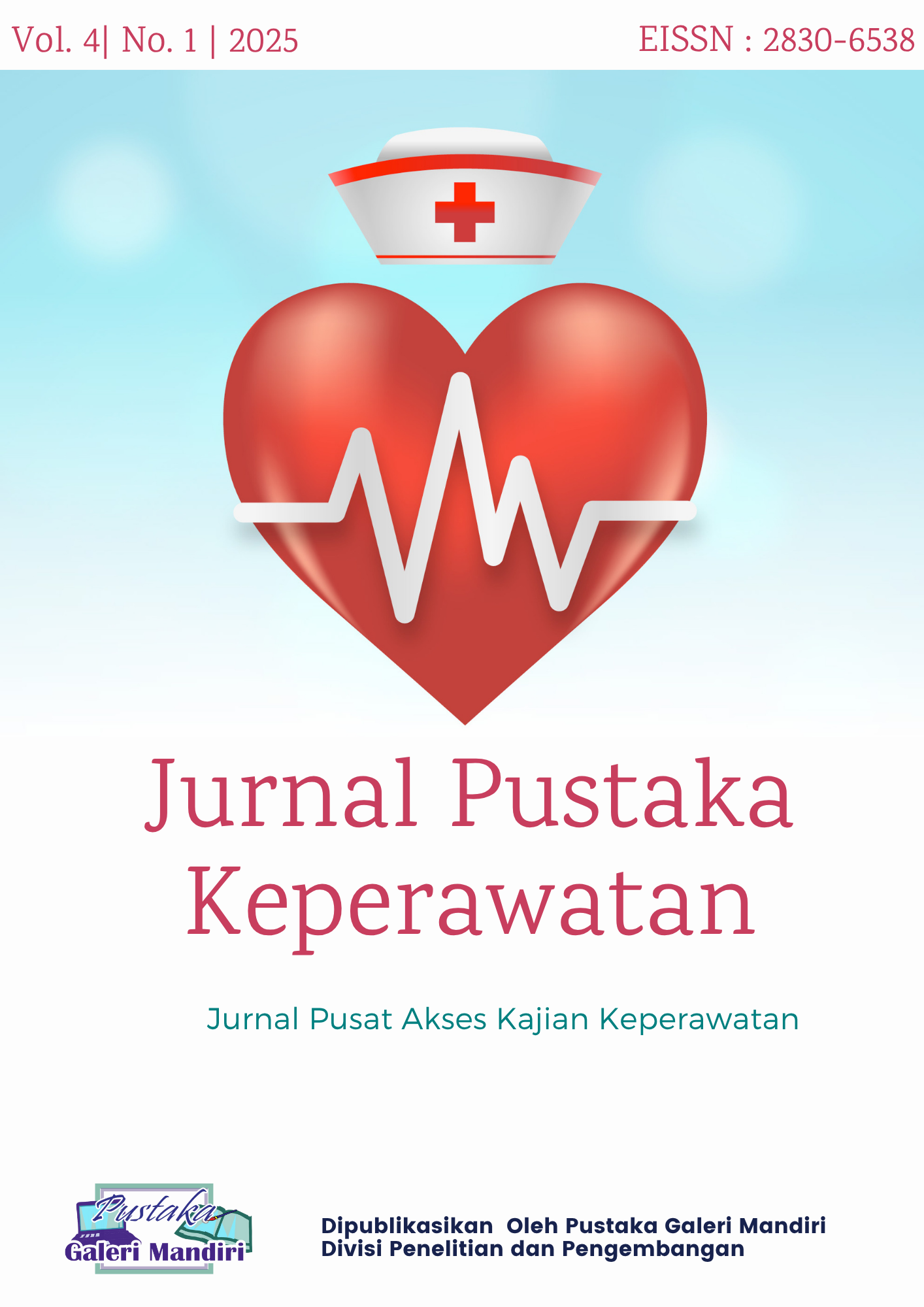Penanganan Emergency pada Pasien Gagal Napas dengan NSTEMI dan Suspek PPOK di IGD
DOI:
https://doi.org/10.55382/jurnalpustakakeperawatan.v4i1.961Abstract
Respiratory failure is a condition in which the respiratory system is unable to perform its gas exchange function effectively, resulting in inadequate oxygen intake and insufficient removal of carbon dioxide. Patients with respiratory failure with Non-ST Elevation Myocardial Infarction (NSTEMI) and sups. COPD must get fast initial treatment because they cannot ventilate spontaneously. Initial handling of respiratory failure in the Emergency Department (ED) airway, breathing, and circulation, according to the principles of Advanced Life Support. If airway obstruction is found, measures are taken to ensure airway patency, such as head repositioning maneuvers, use of oropharyngeal airway, or endotracheal intubation if needed. Furthermore, oxygen therapy is given. The method used is a descriptive case study that aims to describe the initial management of patients with respiratory failure with Non-ST Elevation Myocardial Infarction (NSTEMI) and suspected Chronic Obstructive Pulmonary Disease (COPD) in the Emergency Department (ED). The subject was one adult patient with complaints of acute shortness of breath and a history of smoking, purposively selected based on clinical emergencies that require immediate intervention. Management was carried out using the ABCDE (Airway, Breathing, Circulation, Disability, Exposure) approach, including airway evaluation and intervention, ventilatory support, hemodynamic stabilization, assessment of neurological status with the Glasgow Coma Scale (GCS), and identification of additional clinical findings through supporting examinations. Proper emergency management in the emergency room with the ABCDE approach shows effective results in restoring breathing, ensuring systemic oxygenation, and preventing complications due to respiratory failure.







